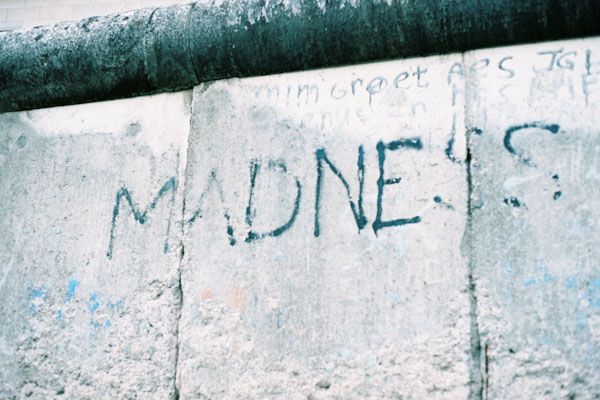Memorial to the Murdered Jews of Europe : Berlin : Peter Eisenman
Up to this point the people are living, in the 4 chambers, four times 750 people in four times 45 cubic meters! -- Another 25 minutes pass. Right now many are dead. One sees that through the window, as the electric light illuminates the chambers for a moment. After 28 minutes only a few are still alive. Finally after 32 minutes everything is dead.
From the other side men from the work detail open the wooden doors...like basalt pillars, the dead stand upright, pressed against each other in the chamber. There had been no place to fall over or even lead forward. Even in death one can recognize families. They hold each other's hands, stiffened in death, so that one has difficulty tearing them apart, in order to clear the chamber for the next load. One throws the bodies out -- wet from sweat, urine, smeared with excrement, menstrual blood on the legs. Children's bodies fly through the air. There is no time.
- Kurt Gerstein - a German officer who visited the camps; horrified by what he witnessed he sent letters to the Allies and haunted by what he saw he committed suicide in 1945
At first you retain a glimpse of the city. The rows of pillars frame a distant view of the Reichstag's skeletal glass dome. To the west, you can glimpse the canopy of the trees in the Tiergarten. Then as you descend further, the views begin to disappear. The sound of gravel crunching under your feet gets more perceptible, the grey pillars, their towering forms tilting unsteadily, become more menacing and oppressive. The effect is intentionally disorienting. You are left alone with memories of life outside - the cheerful child for example, balanced on the concrete platform.
- Nicolai Ouroussouff - architecture critic for The New York Times
After Hiroshima and Auschwitz, the earlier commemorative effort simply could not be duplicated...the Second World War undermined the very symbols through which meaning - any meaning - could be attached to the cataclysm of war.
- Jay Winter Sites of Memory, Sites of Mourning: The Great War in European History
In the past literal symbols were shared, they evolved, and we all experienced them by direct association...today, I think this no longer holds true...I've come to the conclusion that this is not possible. You cannot enforce a narrative of the symbolic; because it is deeply personal in nature...literal symbolism must be transcended. Seeking beauty will yield the spirit
- Moshie Safdie - architect of the Yad Vashem Holocaust History Museum in Jerusalem
And...
because 23 years ago today, on November 9, 1989, the Berlin Wall came down....











Breathtaking photos, Talley. More Berlin! More Berlin! Enjoy the weekend; see you Monday.
ReplyDeleteStunning. Chilling.
ReplyDeleteHaunting. Thanks for capturing Tal.
ReplyDeleteThat memorial is.... something -- and you really captured it. Lovely photos, Talley.
ReplyDeleteWhenever I visit a monument or memorial site, I'm moved by all the layers of meaning and symbolism. So much thought and creativity goes into the making of such a place. We must go visit these places, we must not forget history, and we must then look inward to ourselves. Striking post, Talley.
ReplyDeleteTalley, I've just been catching up on all of your recent posts that I've missed. These photos are spectacular! I didn't visit this memorial while I was in Berlin this summer, and now I'm regretting it. I guess I just wanted to drink in everything that was beautiful and vibrant at the time. Obviously, I need to go back and appreciate the ways in which Berlin is still tied to its heavy history.
ReplyDelete